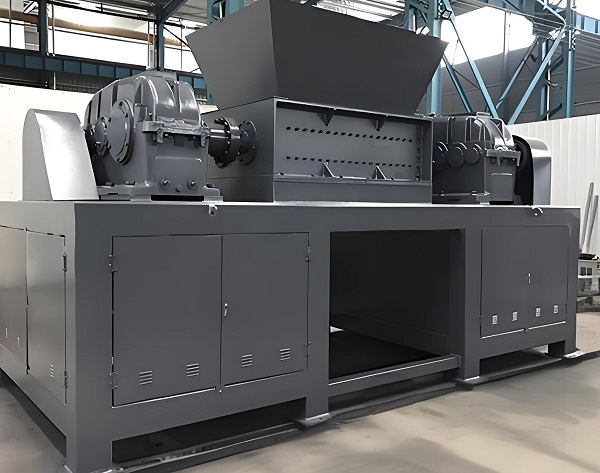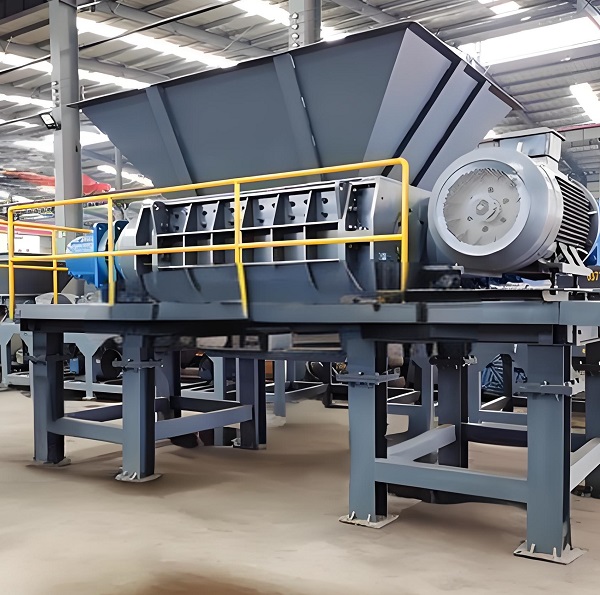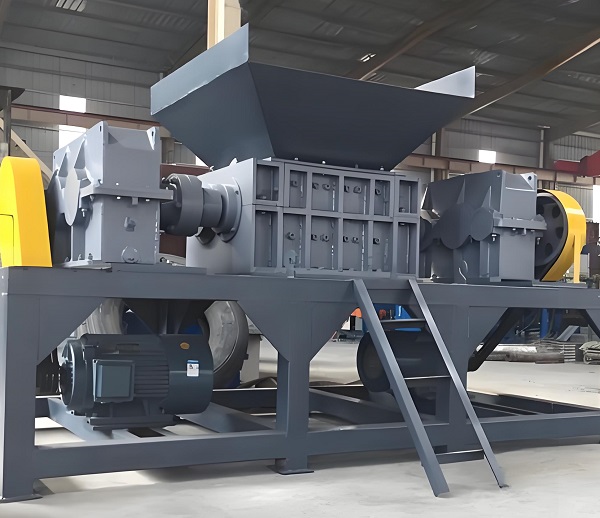Preface:A shredder is a mechanical device used to shred, crush, or shear materials of different shapes and sizes. According to different application scenarios and material characteristics, shredders can be divided into multiple types. Here are some common types of shredders:

Shredder
A. Types of shredders
a. Jaw shredder
Structural features: Composed of a pair of adjustable jaw plates, the distance between the jaw plates is continuously adjusted to accommodate materials of different sizes.
Application scenario: Mainly used for shredding large pieces of materials, such as waste tires, waste plastics, etc.
b. Hammer shredder
Structural features: Composed of one or more high-speed rotating hammers, the material is crushed by the impact of the hammers.
Application scenario: Mainly used for crushing small pieces of materials, such as waste household appliances, waste wood, etc. Hammer shredder is suitable for processing various large and high hardness materials, with strong crushing ability and high crushing efficiency.
c. Knife shredder (blade shredder)

Shredder
Structural features: Composed of one or more high-speed rotating blades, the material is crushed through the cutting action of the blades.
Application scenario: Mainly used for cutting fiber materials such as waste fabrics, waste paper, etc. It is also suitable for handling lightweight materials such as plastic film.
d. Roller shredder
Structural features: Composed of one or more rotating rollers, the material is crushed by the friction of the rollers.
Application scenario: Mainly used for crushing lightweight materials such as waste glass, waste ceramics, etc.
e. Shear shredder
Structural features: The material is sheared and crushed by two sets of blades that move relative to each other up and down or left and right.
Application scenario: Suitable for processing various soft and hard materials, such as plastic, rubber, wood, paper, etc. Shear shredder has the characteristics of good crushing effect, ability to handle harder materials, and slow blade wear.
f. Double axis shredder
Structural features: It has two relatively rotating blade shafts, and multiple blades are mounted on the blade shafts.
Application scenario: Suitable for handling various materials with high toughness and viscosity, such as waste cables, plastic drums, rubber products, etc. The dual axis shredder has the characteristics of good crushing effect, being able to handle various complex materials, and not easily producing dust during the crushing process.
g. Other types of shredders
In addition to the main types of shredders mentioned above, there are also some special types of shredders, such as four axis shredders, hydraulic shredders, etc. These special types of shredders are typically designed based on specific application scenarios and material characteristics.
In summary, there are many types of shredders, each with its unique working principle and application scenarios. When choosing a shredder, it is necessary to select the appropriate type based on the specific properties and processing requirements of the material to ensure the normal operation and crushing effect of the equipment.
B. The function of shredder
As a mechanical device, the main function of a shredder is to shred, crush, or shear materials of various shapes and sizes. The following are the main functions of a shredder:

Shredder
a. Material size reduction:
A shredder can reduce large, heavy, or difficult to handle materials to smaller sizes for subsequent transportation, storage, or reuse. For example, waste tires, waste household appliances, wood, plastics, etc. can all be reduced in size through shredding machines.
b. Material recycling and utilization:
Through the processing of shredders, many waste materials can be broken into small pieces or particles suitable for reuse. These small pieces or particles can be reused as raw materials in the production process to achieve resource recycling. This helps reduce resource waste, lower production costs, and promote sustainable development.
c. Reduce transportation costs:
After shredding the material, its volume and weight usually decrease, thereby reducing transportation costs. This is particularly important for waste materials that require long-distance transportation, as it can reduce energy consumption and costs during the transportation process.
Technical parameters of shredder:
Model: | ZC-E500S | ZC-E500 |
Motor Power: | 5.5kw+5.5kw | 7.5 kw+7.5kw |
Qty of Rotor blades: | 24pcs | 24pcs |
Thickness of Rotor blades: | 15mm | 15mm |
Speed: | 15-24rpm | 15-24rpm |
Diameter of Rotor: | 200 mm | 200 mm |
shredding room size: | 500*280mm | 500*280mm |
Dimension L/W/H: | 1600*600*1600mm | 1600*600*1600 mm |
Weight: | 720 kg | 750 kg |
d. Improve processing efficiency:
Shredders usually have high processing efficiency and can quickly crush large amounts of materials. This helps to accelerate the production process and improve production efficiency.
e. Security Enhancement:
For some materials that may cause harm to the human body (such as waste wires, cables, etc.), the use of shredders can reduce their danger and facilitate subsequent safe handling and reuse.
f. Environmental Contribution:
The shredder plays an important role in waste disposal and resource recycling, helping to reduce environmental pollution caused by landfill and incineration. By promoting the recycling of resources, shredders help achieve more environmentally friendly production and consumption patterns.
PS:The shredder plays an important role in material handling, resource recycling, and environmental protection. It can not only improve production efficiency and reduce transportation costs, but also promote resource recycling and reduce environmental pollution.
Save Time! Get A Detailed Quotation Quickly.
